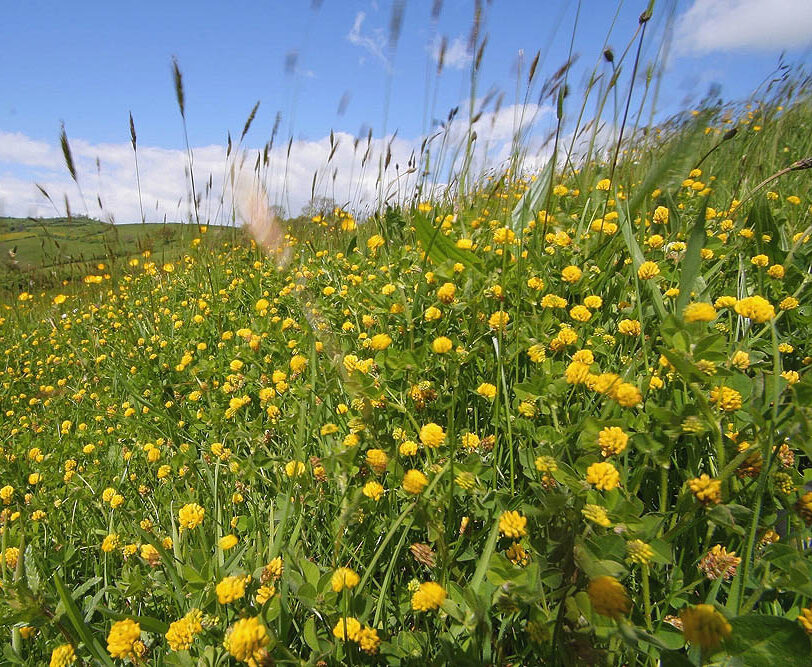Description
Black medick is a short annual or biennial leguminous plant. It’s often sprawling growth and weak stems has clover-like leaves and numerous compact bright yellow flowers heads. In seed it has distinctive seed pods which are black and coiled when ripe.
Habitat Information
Black medick as a native species is characteristic of relatively disturbed, infertile sites on neutral or calcareous soils and is particularly adapted to dry soils and south facing slopes where its long tap root allows it to exploit water resources unavailable to other species.
Black medick has been sown in seed mixtures as minor forage legume on farms since the 15th century on drier land or on other soils in rotation with red clover to avoid clover sickness.
Growing Information
Black medick can be sown at any time of the year when soil and weather conditions are suitable. Young seedlings are susceptible to slug and frost damage so are best sown in good growing conditions in late spring or early summer.
As an annual/biennial its individual plants are short-lived but do self-seed freely, and if the vegetation is open enough, it can regenerate from seed and so persist for several years.
It can be quite a vigorous and sprawling plant in good growing conditions. In the first year of growth it can be quite smothering so neither agricultural or native forms of black medick are widely used in wild flower or habitat mixtures. It is also considered too short-lived for pollen and nectar mixtures.
It has never been highly rated as a forage legume. Its foliage is not particularly liked by livestock, in short-term leys it matures too early to contribute much good herbage to a mixed hay crop. It was mainly used in difficult circumstances where there were no better alternatives.
Its main use is as a pioneer species as a component of seed mixtures for reclamation schemes on difficult substrates (eg PFA), to help build fertility and organic matter. It is also sometimes under-sown in May into establishing spring cereal crops to suppress weeds and fix nitrogen.


